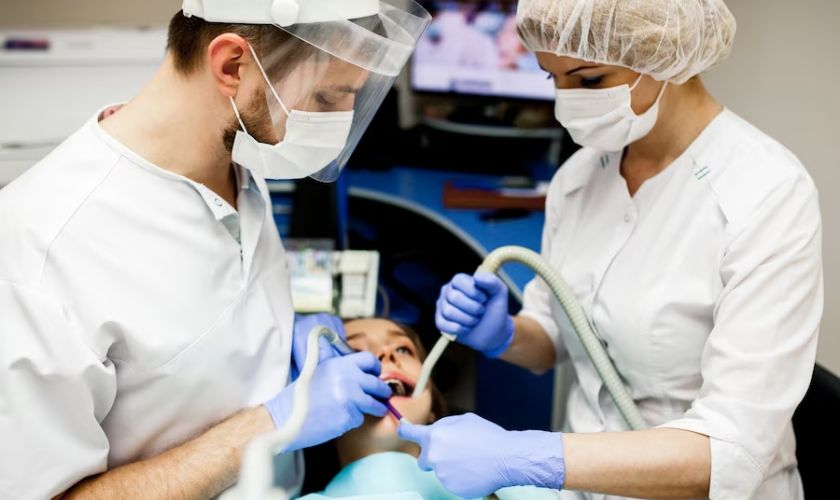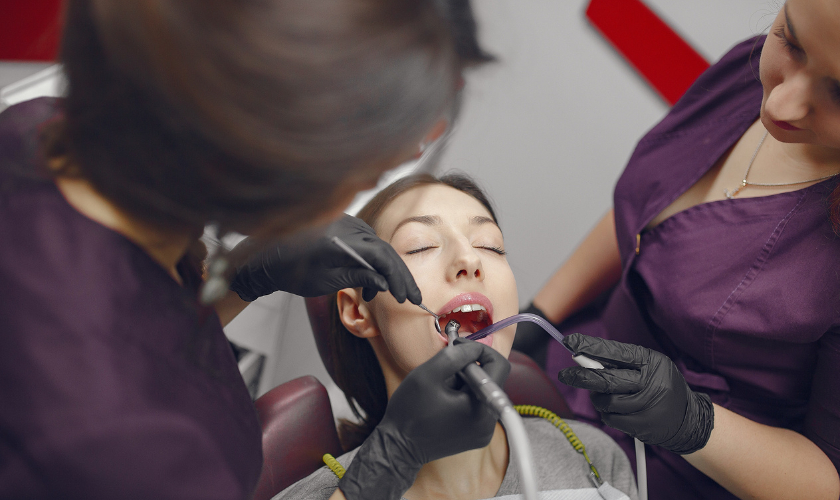Smiling is an invaluable asset that can make us feel confident and happy. But what happens when your smile doesn’t reflect the way you feel? Dental problems like tooth decay, missing teeth, or damaged gums can take a toll on our self-esteem and social life. Luckily, restorative dentistry offers a range of solutions to help you regain confidence in your smile. This innovative field has transformed millions of lives worldwide, from dental implants to crowns and bridges. In this blog post, we’ll explore the benefits of restorative dentistry and how it can enhance your appearance and overall well-being. So get ready to say hello to a brighter, healthier smile!
What is Restorative Dentistry?
Restorative dentistry is a dental specialty that restores teeth’ natural beauty, function, and appearance by replacing damaged, missing, or incomplete teeth. This procedure can be done on children and adults and is one of the most well-known dental procedures in the United States. That is why restorative material accounted for the highest market share of around 43.6% last year.
Types of Dental Procedures
Dental procedures can help restore your smile, improve your oral health and confidence, and give you back the function of your teeth. Procedures include tooth extraction, dental implants, dental Crowns and Bridges, Periodontal treatments (gum surgery), Invisalign treatment, and more.
Tooth extraction is the most common type of dental procedure performed. It’s generally necessary when decay or other problems require tooth removal. Tooth extractions can be done using general or local anesthesia. Local anesthesia numbs the area around the tooth, while general anesthesia completely numbs the entire mouth. As a result, most people experience little or no pain during or after tooth extraction.
Dental implants are devices that replace missing teeth with artificial ones. Implants are made from titanium alloy and are placed into the jawbone using a special drill. The implant holds the replacement tooth in place and provides stability for chewing and speaking. Implants can last up to 20 years without additional repairs or maintenance.
Crowns and Bridges are two types of dental restoration that use mainly composite materials such as porcelain fused to a metal framework (PFM). A custom-made arch is designed based on the individual characteristics of each patient’s teeth and jawbone; then, impressions are taken to create a mold for the appliance. The crown is fabricated in a dental lab before being fitted onto the adjacent teeth by a dentist or orthodontist. Bridges are similar to crowns but use
Benefits of Restorative Dentistry
When you see a dentist for the first time, it is important to understand the benefits of restorative dentistry. This type of dental care is designed to restore teeth damaged due to decay or trauma. Restorative dentistry can help improve your smile and confidence by correcting defects in your teeth and providing you with a beautiful, healthy smile that will last a lifetime.
Restorative dentistry can correct many problems, including:
-A tooth that is crooked or out of alignment
-A missing tooth or tooth that has been replaced with an artificial one
-A cracked tooth
-A Root Canal
How does Restorative Dentistry Restore Teeth?
Restorative dentistry is a type of dental care that restores teeth damaged or lost due to decay, accident, or disease. Dentists specializing in restorative dentistry use various techniques to repair teeth and restore their appearance.
One of the most common methods restorative dentists use is restoration with crowns and veneers. Crowns are removable implants custom-made to fit the tooth in question. They are made of ceramic, metal, or plastic and are shaped like cones. Veneers are thin sheets of tooth-colored material placed over teeth’ front, back, or sides. They can be attached to crowns or alone as a final restoration.
Other popular techniques used by restorative dentists include:
Crowns and veneers can be combined to create more complex restoration treatments. For example, a dentist may place a crown on top of a veneer installed on another tooth. It allows the dentist to hide any unsightly blemishes on the surrounding teeth while restoring the smile’s overall look.
Dentists use adaptive technology (3D printing) to create customized dental implants and other prosthetic devices. This technology uses special software to generate CAD models of an individual’s mouth and then prints them out using plastic materials like titanium or stainless steel. It makes it possible for dentists to create
What to Expect from a Restorative Dentistry
If you are anything like most people, you presumably have dental fears. Maybe you’re afraid of the dentist because of a bad experience in the past, or maybe you don’t feel confident in your smile. A restorative dentist can help alleviate some of those fears and give you back the confidence to show your smile to anyone.
When you visit a restorative dentist, they will take a detailed history of your dental problems and treatment plans. They will also closely examine your teeth and gums, looking for signs of decay, injury, or other dental issues. It is where the restoration work begins.
Restoration work is often done using advanced dental technologies that allow for more precise repairs and restoration than traditional dentistry can achieve. Depending on the type of damage that needs to be repaired, restoration may include:
–Crowns and bridges: These are two common types of restoration work that use artificial materials (such as tooth implants) to replace missing teeth or support weakened ones.
–Inlays and onlays are small pieces of artificial material placed directly into the tooth structure to restore its shape and function.
–Root canal therapy: If extensive damage to one or more teeth’s roots (the part of the tooth below the enamel), a root canal may be necessary to save it from becoming permanently damaged or removed altogether.
–Dentures: Dental implants may not be an option for everyone
If you are unhappy with the appearance of your teeth and want to restore your confidence in their appearance, then restorative dentistry is the key to success. Thanks to modern techniques and equipment, restorative dentistry can provide beautiful, healthy teeth that look natural and comfortable. If you want to restore your smile, schedule an appointment today to see how we can help you achieve optimal dental health.


